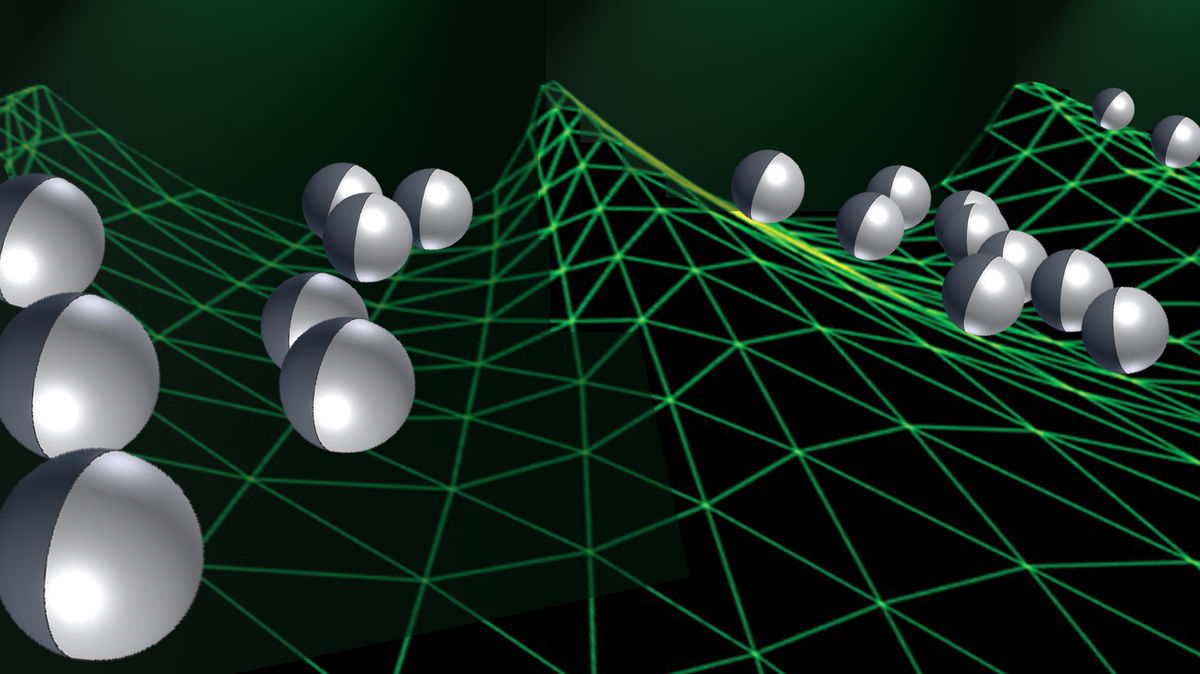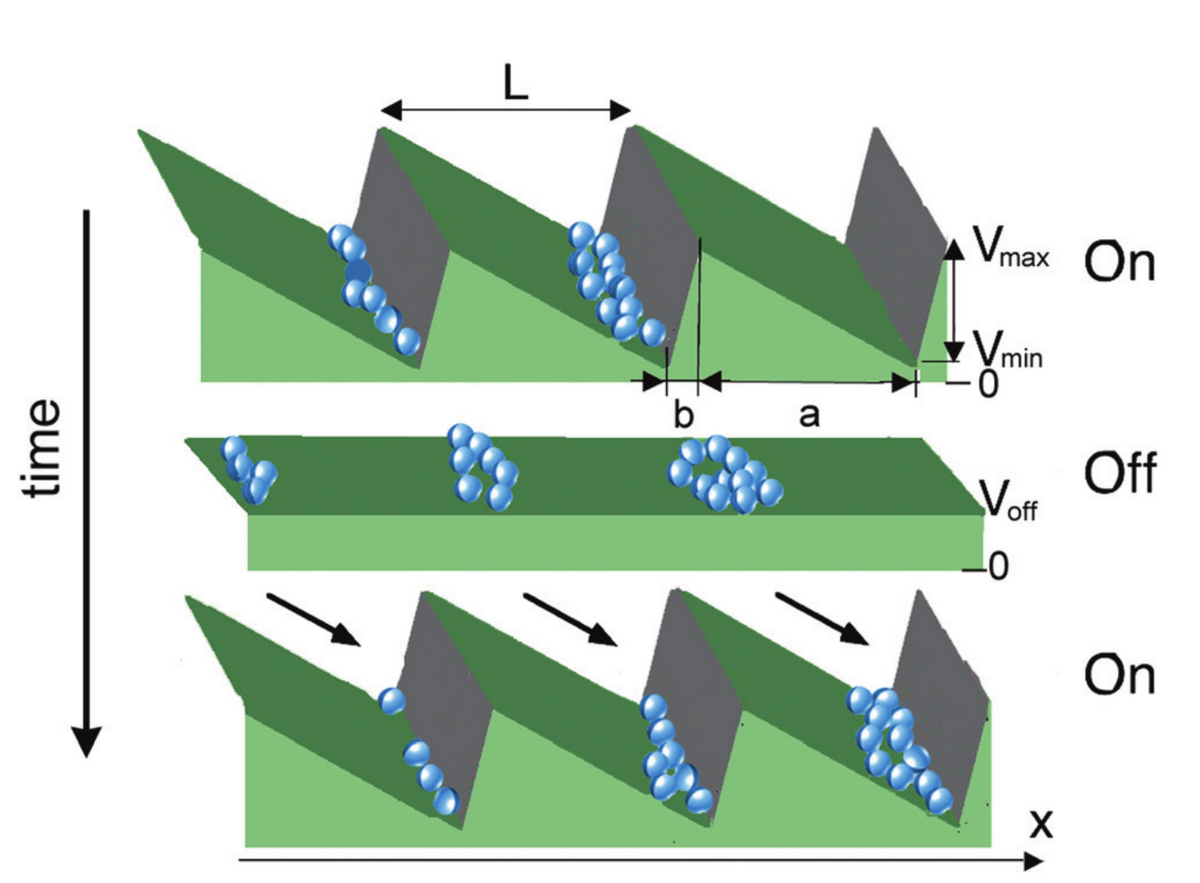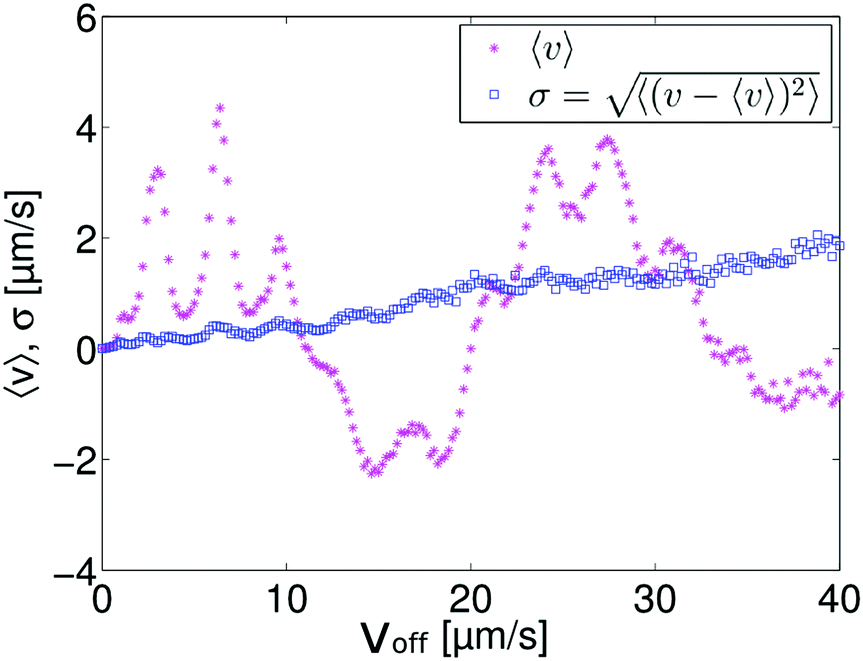
Propagating density spikes in light-powered motility-ratchets

spikes propagating resonantly through a flashing light-field
Active colloids are autonomously navigating microparticles, but without direction. Here, we experimentally demonstrate that active colloids can self-organize into a moving density spikepattern, which resembles a shock wave and propagates over long distances, almost without dispersing. The underlying mechanism involves synchronization of the colloids with a flashing light-field (i.e. periodically switch on and off (flashing) a sawtooth-shaped light-pattern). Due to the synchronization, active particles see the same intensity gradient each time the light-pattern is switched on, but no gradient in between. This creates pulsating transport whose strength and direction can be controlled via the flashing protocol and the self-propulsion speed of the colloids. Our results are in excellent agreement with numerical simulations.

Since light fields can be easily adjusted in space and time, the transport velocity can be tailored by the parameters of the flashing motility field, and remarkably, it reverts when the particle’s self-propulsion velocity exceeds a certain threshold. Thus, the present setup can be used as a device for segregating particle ensembles by their speed. In addition, our findings might be useful for future drug delivery applications.
|
Propagating density spikes in light-powered motility-ratchets |
C. Lozano, B. Liebchen, B. t. Hagen, C. Bechinger, H. Löwen Soft Matter, 15, 5185 (2019) |
